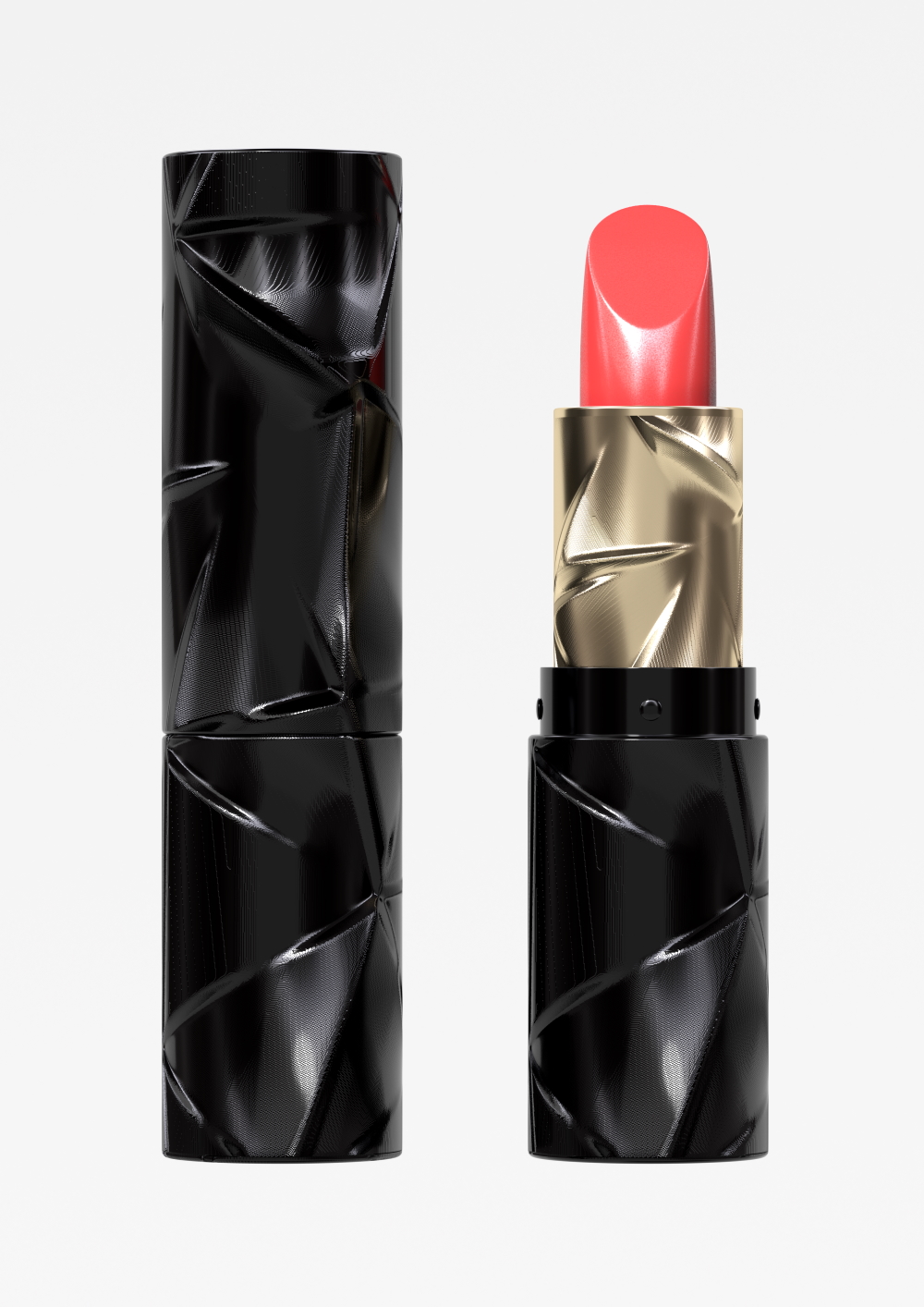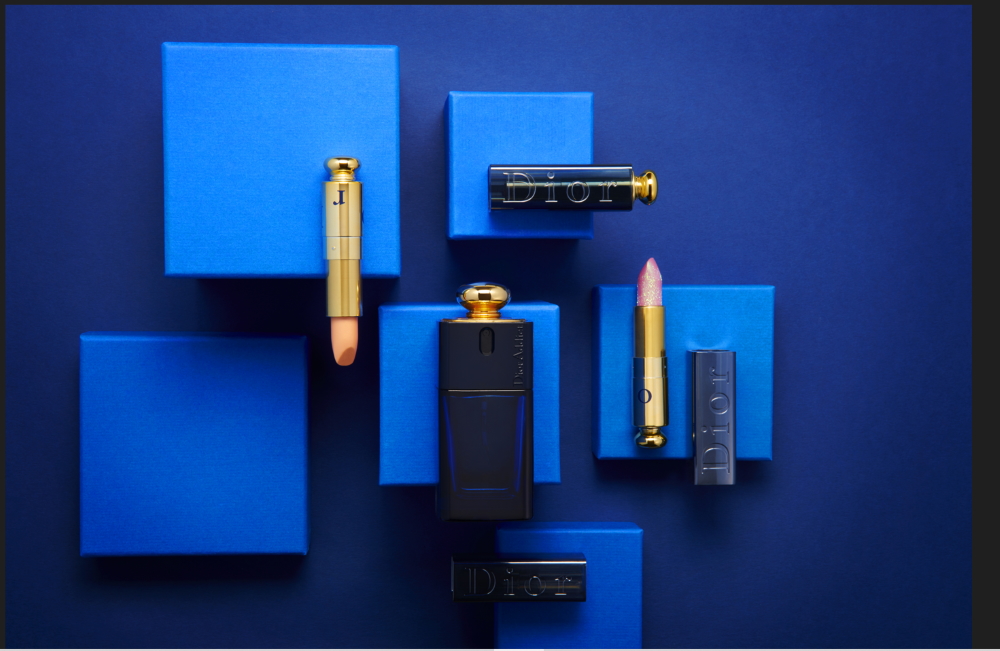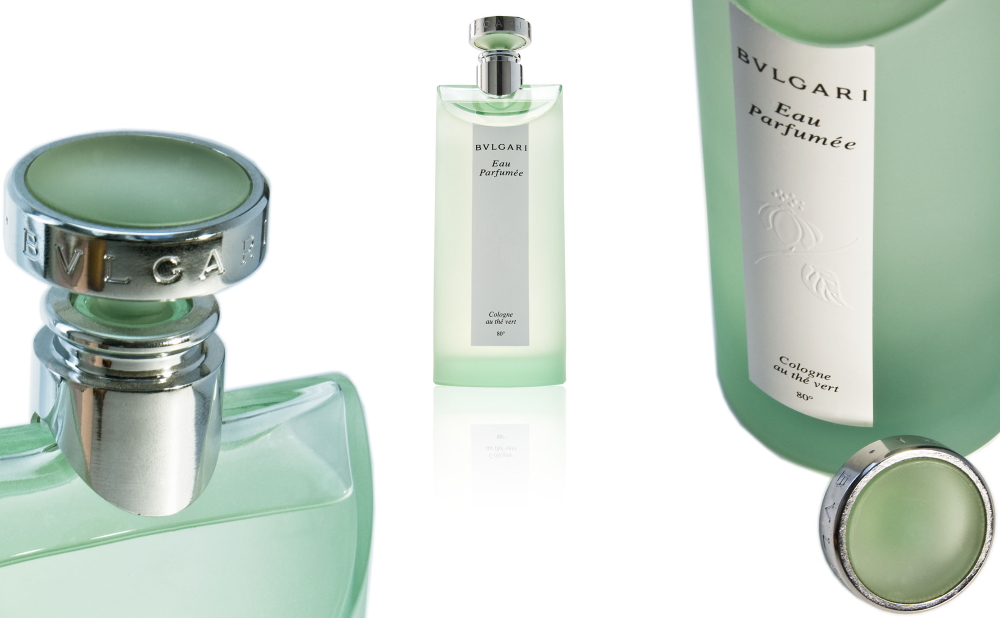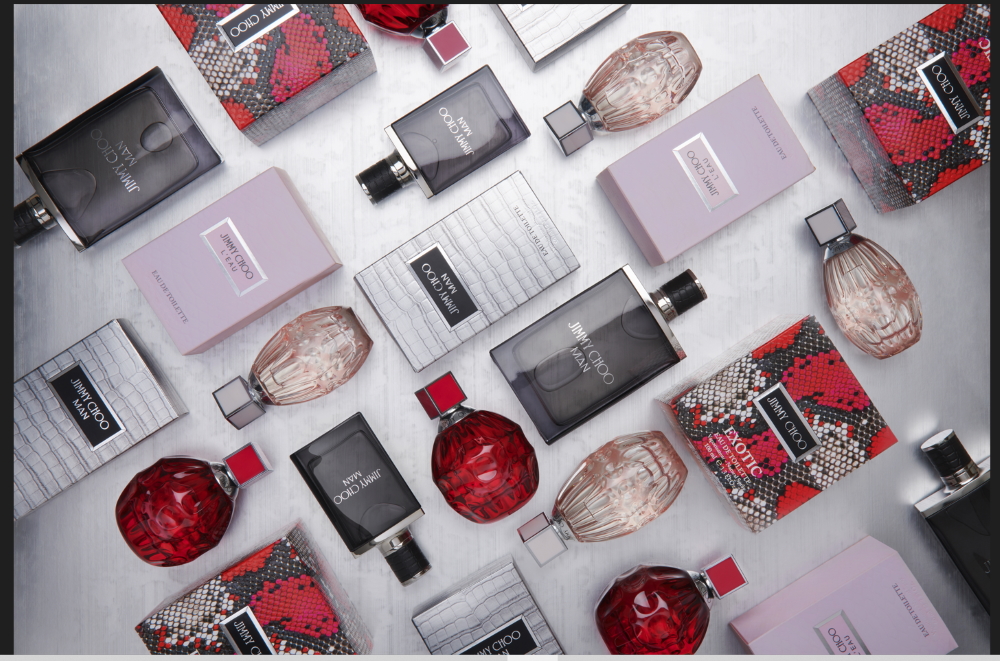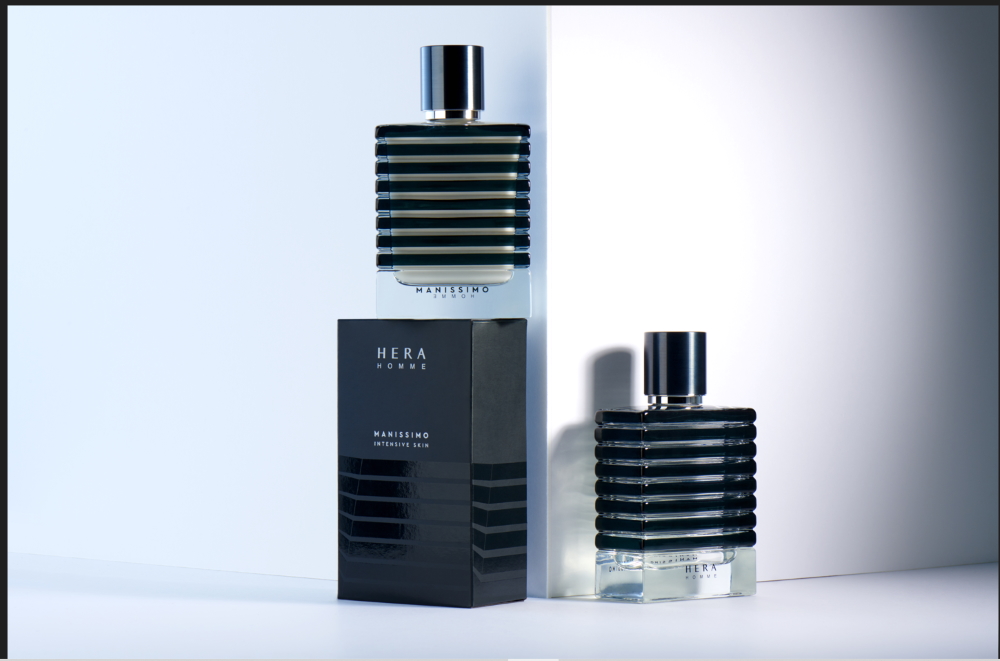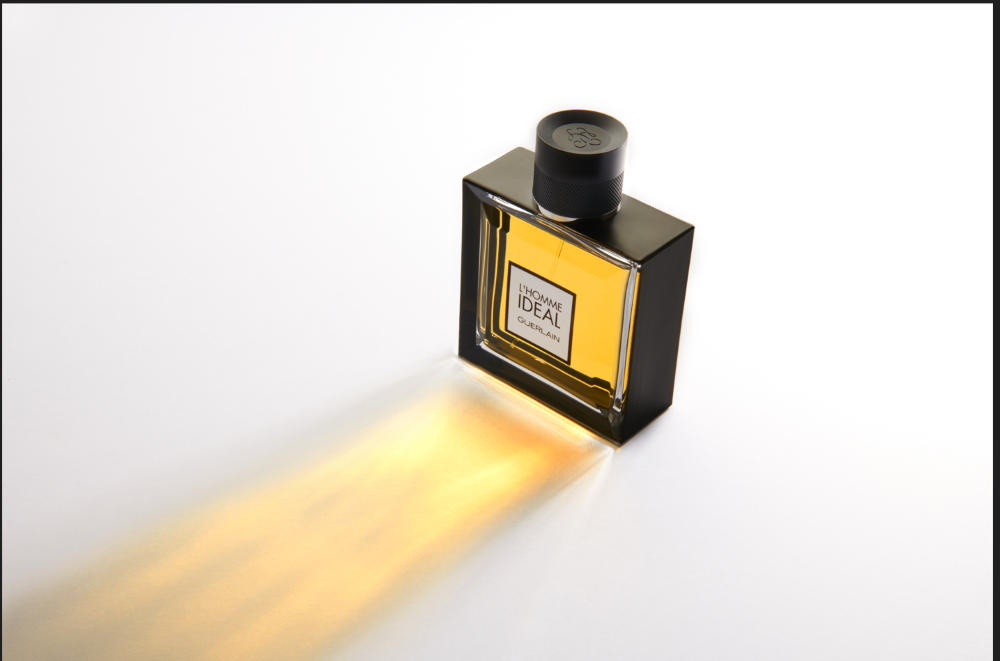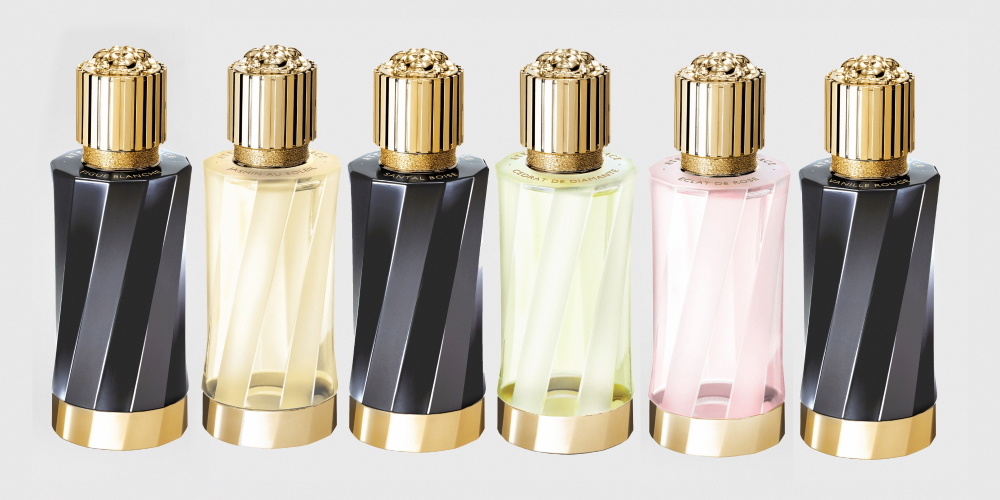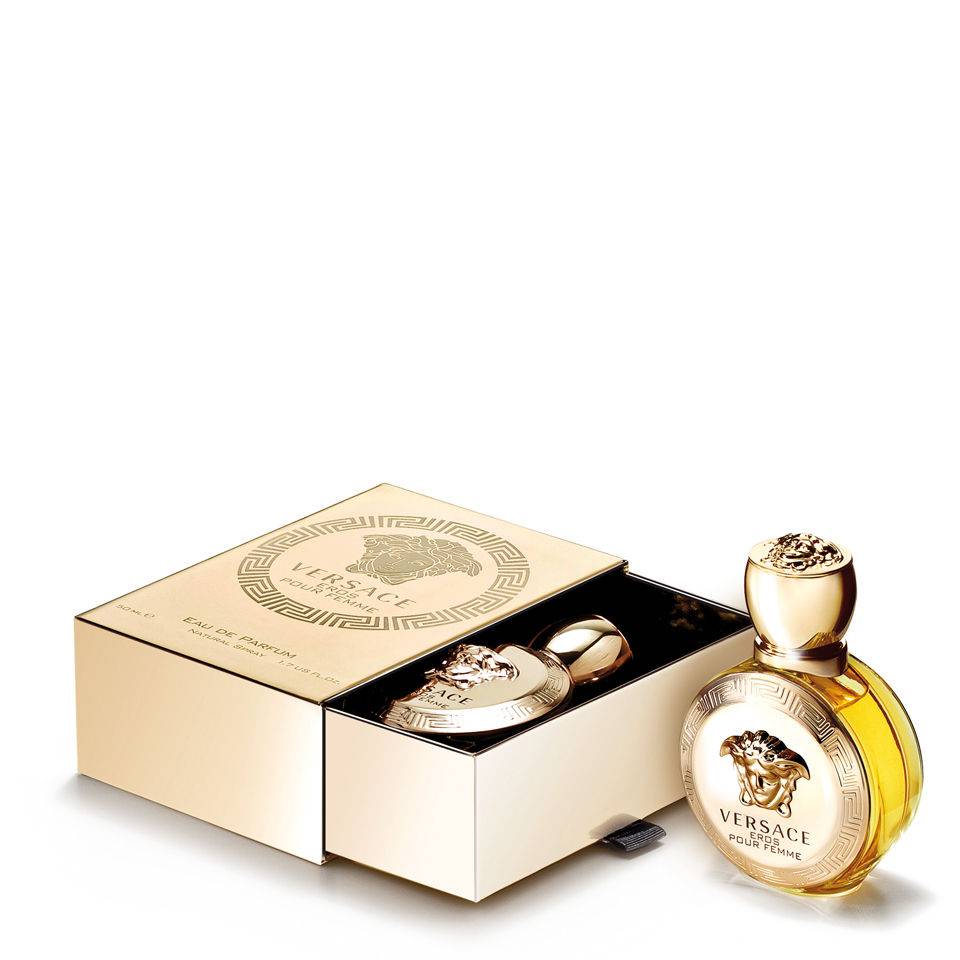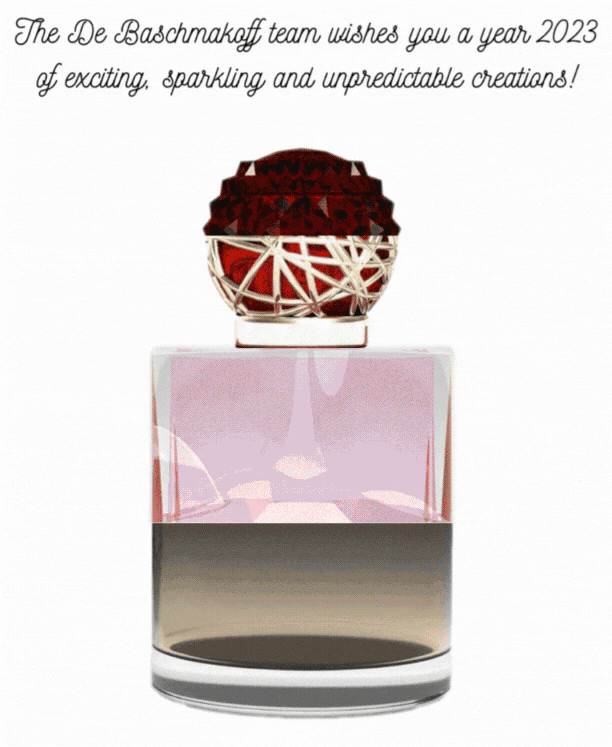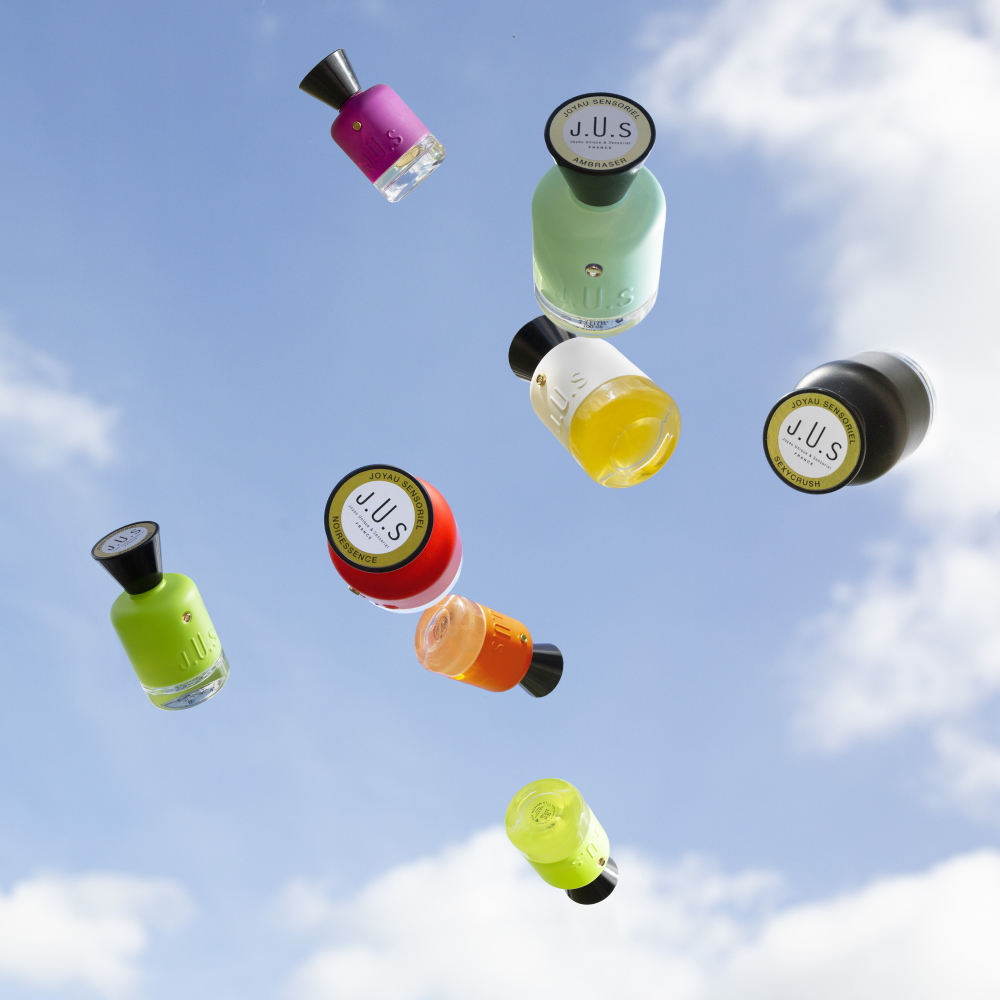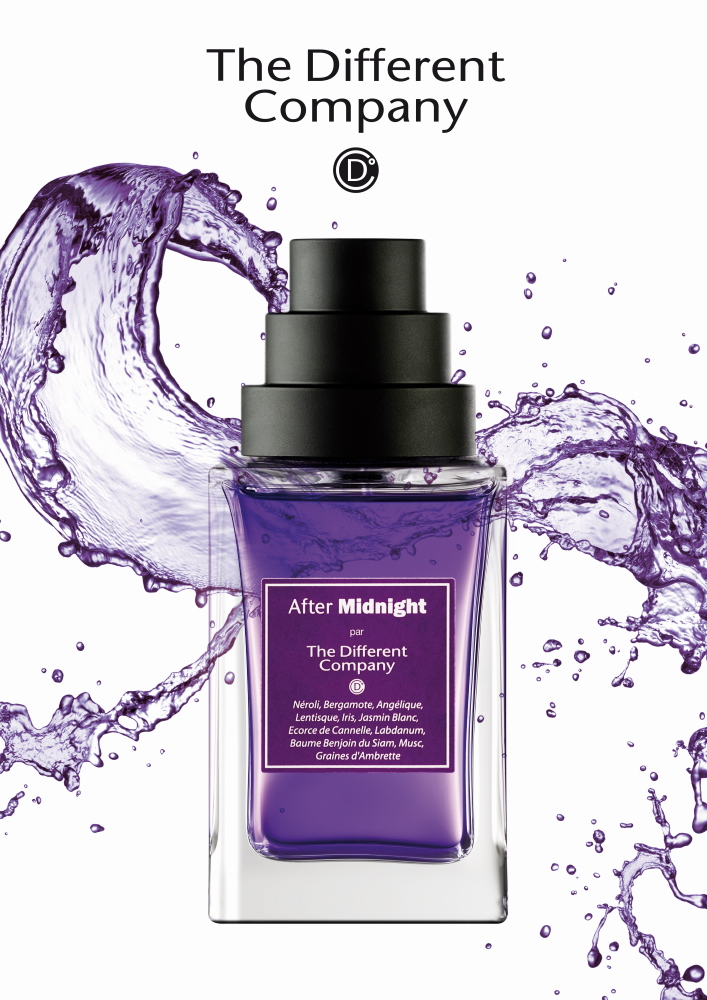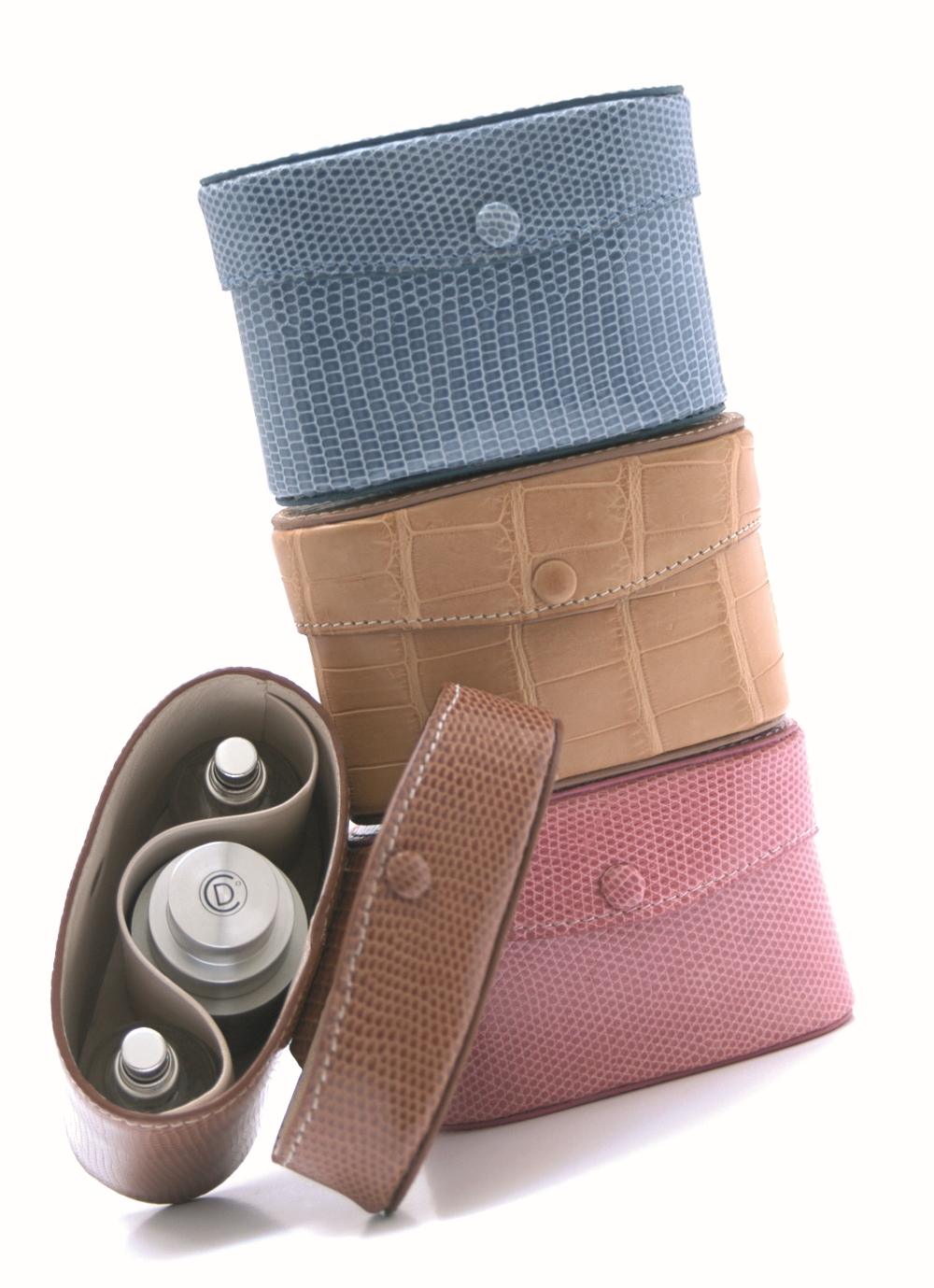Thierry de Baschmakoff
creative director & designer for luxury packaging
France
Balmain. Bentley. Bulgari. Pierre Cardin. Cartier. Cerruti. Dior. Givenchy. Guerlain. Jaguar. Kenzo. Lalique. Lanvin. Versace, Yamamoto. Many of the world-famous top-brands are on the client list of this French designer – be it in ancillary, architecture, beauty, brand marketing, perfumes or 'Futur Broche', his brand machine incubator. A quote on this company’s homepage specifies its claim „Design Thinking for luxury Brands“ in an aphorism: „The innovation begins where the future seems to be smiling.“
Thierry de Baschmakoff
creative director & designer for luxury packaging
France
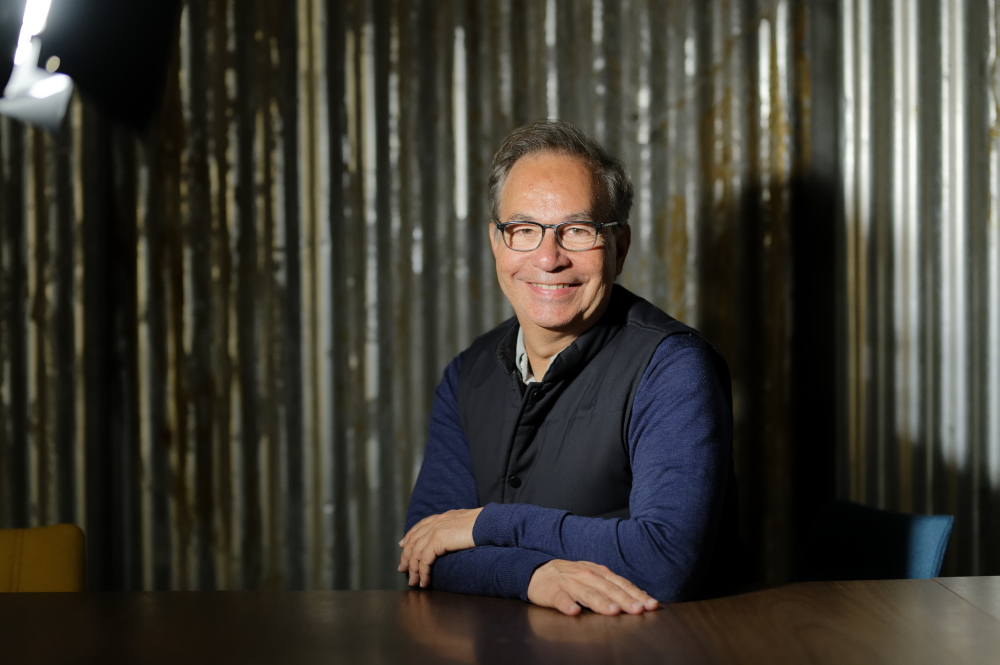
6.000 objects and concepts in the due course of 30 years! That’s a very impressive interim conclusion that Thierry de Baschmakoff can be proud of. The business that this Frenchman is so successfull in primarily, originates in the place where he was born on June 23rd, 1960: Grasse (France) is „the only subprefecture of the Alpes-Maritimes department in the Provence-Alpes-Côte-d’Azur region on the French Riviera“ and the world’s capital of perfume“ (Wikipedia)! „I must be one of the only Grasse-born people to take care of what’s around the perfume and not inside!“, Monsieur de Baschmakoff told flairflair.com. He grew up in a family of perfumers: his brother-in-law and his uncle were perfumers, and the legendary perfumer Jean-Claude Ellena (former Hermès’ in-house perfumer and now Olfactory Creation Director of Le Couvent - Maison de Parfum) is his cousin by marriage. „I would bathe in this universe while another part of my family was involved in drawing and architecture. In my extended family, these two universes stood alongside.“ Because of the combination of all of this chances are high that it was such a background that urged him to draw and design perfume bottles. Not only did he think quickly of very creative ideas, but their realistic construction flew easy from his hands too – thanks to a technical training in civil engineering and technical drawing. With a mixture of great self-confidence, self-assurance plus a good portion of naivety, Thierry de Baschmakoff started his profession as a 100 percent solo career from the very beginning.
In June 1985 he left the middle town of Grasse and went to the metropolis Paris for founding Aesthete (later renamed in da Baschmakoff), a design company for the luxury packaging in the field of perfume, beauty products, watches, leather goods, pens as well as accessoires. All what the man from nowhere had to show to agencies and possible clients were carved bottles in plaster! But the times were different, the expectations lower back then and so a few jobs came in. Among those was a bottle for French fashion designer Sonia Rykiel. The breakthrough came in 1992 with the design for Bvlgari’s Eau Parfumée au Thé Vert. This assigment that „was won by chance“ (de Baschmakoff) meant the start for his agency that has culmulated most references among luxury brands. Expressed in numbers: more than a thousand different perfume bottles! Also worth mentioning is the birth of Dior Addict, a new approach to lipstick in 1997. The year 2000 saw the founding of The Different Company. This ultimate luxury perfume house presents the best ingredients in magnificent bottles made not to be thrown away. It was established in cooperation with Jean-Claude Ellena. His daughter Céline creates all the fragrances since 2005 and received Best Unisex Scent Award by beautynewsNYC.com for Sel de Vetiver in the following year.
On his LinkedIn-profile Thierry de Baschmakoff writes: „I was intrigued by the "Design" movement from a very early age in the 70's. I was ten years old at the time, and I quickly became interested in designing objects and intuitively did design thinking without formulating it in this way. Thinking about a subject by applying the same principle of reflection as for an object is ultimately a logic that has become a real trend. After having designed so many objects I can say that I have developed a natural and intuitive form of design thinking.“ That he has his finger on the pluse of current affairs too is mentioned on the lead paragh of an interview with the multiple awards winner on cossma.com: „De Baschmakoff is not only inspired by new materials, but also by technology transfer when using materials from other industries, for example the automotive industry, in personal care and perfumery packaging.“
Thierry de Baschmakoff works and lives in Paris where his studio is located, while the products are modeled in Gabris, above Grasse (France).
Interview December 2022
Design thinking for luxury brands: a search for the visual
INTUITION/IMAGINATION
How does intuition present itself to you – in form of a suspicious impression, a spontaneous visualisation or whatever - maybe in dreams?
I never dream of creation (so I sleep better), but I see creation all around me. A shadow drawn by an object, a furtive image seen on the internet or in nature and it imprints itself in my unconscious mind and comes out in bits and pieces when I dig into my memory to create.
Will any ideas be written down immediately and archived?
An idea that arises in my brain if it seems really relevant becomes a form of obsession and remains engraved in my memory, I can transcribe it into a sketch much later.
?: How do you come up with good or extraordinary ideas?
If the subject is complex with relentlessness and repetitive thinking, little by little I'm starting to see the thing take shape that will be really strong. I like these research motions.
Are great ideas based on intuition and do they reveal themselves in a kind of clear as well complete version that just has to be realized? Or is it endless trials and errors (after the first spark) that result in constant developments up until the final result?
A designer conceptualizes very quickly by a rather precise form, it is an advantage and also a disadvantage because it is sometimes necessary to eliminate certain appearances to find others. Then begins a work of cleaning and new creations, because, yes, it takes several ideas to make a successful one.
What if there is a deadline, but no intuition? Does the first fuel the latter maybe?
A deadline of course causes a form of stress and requires a more controlled and efficient concentration. Finding the right creative directions quickly is for me quite easy even under pressure, what is more difficult to master is the proper execution of these ideas and in this case timing plays a major role.
INSPIRATION
What inspires you and how do you stimulate this special form of imaginativeness?
As I touched on above, everything is a potential starting point for a creative idea, this comes from the fact that I have been photographing anything and everything for over 35 years. Just taking a picture of something that seems insignificant but has inspired me to take a picture will become a source of inspiration. I would say that I have a permanent database around me and in my portfolio.
How do you separate the good from the bad and which ideas are worthwhile to be explored further or whether one idea has the potential of being outstanding really?
You can talk about pure feeling to choose what is a good design or just average, a mix of experience, feeling and also objectives because you have to respond to a brand order. I like to go to the borders of what seems to be extreme creative zones and provoke reactions. Too much control can make the creation boring.
Has it to appeal to you primarily or is its commercial potential an essential factor?
The balance is always difficult to find, that's why what I like but which seems to be a little or very far from the objective will still be presented. Creation is risk-taking, otherwise it is not creation.
Do you revisit old ideas or check what colleagues/competitors are up to at times?
Even if we don't want to, our memory forces us to take back our ideas and those of others. My dream would be to be able to erase my memory for a while and imagine totally new and never seen creations. Sometimes naivety on a subject allows us to be very creative.
But yes, ideas are recycled and it's a natural system because we are surrounded by other people's ideas and our own archives are an exceptional database. We have over 7.000 archived designs that are still relevant.
CREATIVITY
Which time/place/environment suits your creative work process the best (tranquillity or pressure) and which path do you take from theory/idea to creation?
I thought for a long time that the surrounding stress of the city's artistic activity was an engine of creativity. It's true, but also, as I mentioned earlier, it's a source of pollution for our memory, which doesn't select and absorbs a lot.
Today I find it very powerful to be able to decide to concentrate on a subject without interference and thus to be able to go very far in the reflection without being disturbed by the environment.
My creative process is always a search for the visual, I have to see something concrete directly, even if it's about creating a brand concept, very quickly I simulate in my mind a tangible element. A shopping bag for example with a logo and a pattern, or how an object can best translate the concept, I am always in direct contact with the factual. It's an immediate process that allows me to move quickly.
What is better in the realization process: speed and force creativity i.e. grasp the magic of the moment, or a slow, ripening process for implementation/elaboration?
It's really a mix of the two principles, I think of a project as soon as I know about it but without really thinking about it, I put it in a box in my mind, it's there, I know I have to work on it but I let it happen. When I really focus on it I already have elements that appear very quickly and I can as mentioned above directly see concrete translations in my brain.
If problems occur during creativity or one’s stuck even, how can these be solved?
We usually get stuck when we don't understand what the brand is looking for, we don't understand or the objectives are not clear or the brand lacks depth, which can happen. Creation is not a precise process, it is sometimes out of our control which makes every creation unique and humanised.
How important are self-doubt and criticism (by others) during such a process i.e. is it better to be creative on your own, only trust your own instincts, or in a team?
First of all, you have to be self-critical of your own work, which is the most effective, but also the most difficult, because it requires a good analysis of your work and of what others might think of it.
Then sharing with the teams is also important because we compare the different ideas and make a new selection of creations.
Should a creative always remain true to him-/herself including taking risks & going against the flow or must one, for reasons of (commercial) survival, make concessions to the demands of the market, the wishes of clients and the audience’s expectations?
We must always propose creations that are offbeat, surprising and innovative, just because that is our role, a creation must shake up, change and bring a new reading. Whether for commercial, marketing or risk-taking reasons they end up more watered down is the eternal debate that is in the hands of the client, but we have brought a spectrum of creation that offers choice.
How is innovation still possible if one has established a distinctive style and, just in case, is it good to be ahead of one’s time even one hazards not being understood?
Innovating is indeed a problem of timing, too early it is not understood, too late others have arrived at the right time. That's why I often show very creative, innovative and offbeat prospective projects, just to throw them into the space and see how they react. It's also a little pleasure to be able to create without constraints in an agency.
It is also a way of playing with chance, because research is sometimes a bottle in the sea that will perhaps find its audience.
When does the time come to end the creative process, to be content and set the final result free - or is it work-in-progress with an endless possibility of improvement?
It's usually the deadlines that force us to stop a creative process, the research phase is actually quite short because there is the whole execution part that takes the longest, even if it prolongs the creative research too.
We can never stop creating on a project because we can never be satisfied and ask ourselves a lot of questions, we have to reach the stage where we are close to saturation.
In case of failure or - worse - a creativity crisis how do you get out of such a hole?
It is almost impossible to have a creative breakdown on object design, because it is about shapes and to unblock your mind if this happens you just have to draw some principles, even if they are quite rough, to allow your mind to enter the process again. On the other hand, when it comes to imagining more global concepts such as brand territories, one can sometimes be in total darkness. You must not insist, let a little time pass because the mind continues to work and when you go back into the project the ideas are built up in stages.
SUCCESS
Should/can one resist the temptation to recycle a ‘formula’ one’s successful with?
A concept, an idea, a design will be proposed as long as it doesn't find a taker, it's a kind of search for recognition, it's a form of recycling. So it's more like a search for success. But when a principle has generated a success, it must be considered as finished and belong definitively to the others. Not all visual creation professions have this constraint, but for design it is an obvious one.
Is it desirable to create the ultimate/timeless work, but doesn’t “top of the ladder” bring up the question of “what’s next?” i.e. isn’t such a personal peak “the end”?
Creation is a never-ending universe, there is no real summit except on a personal level, which in this case amounts to being a goal that one has set for oneself. Even an artist does not reach a ceiling, he will continue to want to bring a new facet to his work, only his disappearance stops this quest.
MY FAVORITE WORK:
Probably the most difficult question, choosing the one you are most proud of in your work remains a real challenge... but in the end the project I am most proud of today is not yet fully real, it is in development, it is not a design it is a new lipstick concept a new mechanism that gives birth to a patent.
We called it Cheeky because it is brazen enough to take on the current high performance systems. It's a concept that can be totally dismantled and therefore easily refilled, and can be totally customised, especially on the part that is generally standard. It can be produced in additive printing, in a single material, and there's a small detail that you can't crush the lipstick by accident, which often happens.
I wanted to create a really innovative product without changing everything and be really sustainable. Strangely enough, it's not a design, it's a concept.
